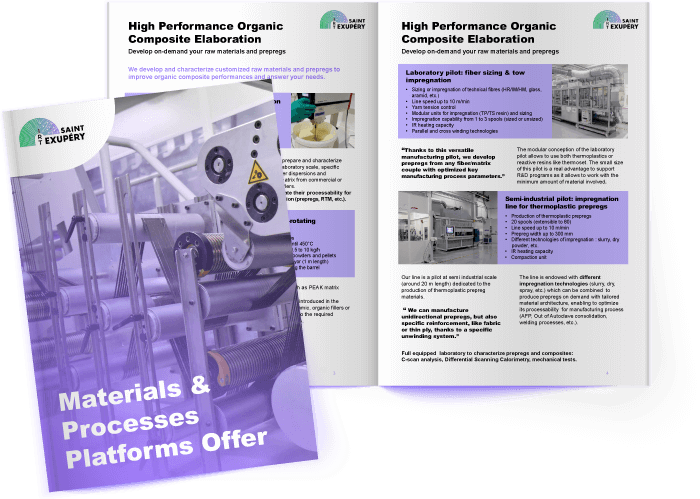Organic Matrix Composite Materials
We are involved in the development of lighter structures that are both resistant and multifunctional, using composite materials.
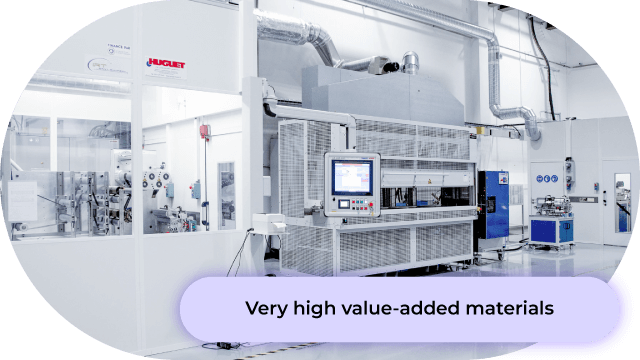
We design and develop multifunctional approaches with well-controlled architectures while operating on a semi-industrial scale. Going beyond the traditional trial-and-error approach often seen in the industry, we develop digital tools and methodologies to design and manufacture high-value materials and structures. This enables, for example, the reduction of design and qualification phases through an industrial understanding (virtual testing) of how development process parameters influence the microstructure and properties of materials.
The functionalization of composite materials also represents a major scientific and technological challenge to fully exploit their performance. We define and implement methodologies and processes to functionalize our materials and achieve specific properties (electrical conductivity, thermal conductivity, damping properties, noise reduction, etc.).
Our research areas
Finally, high-performance carbon fiber-reinforced thermoplastics have been extensively studied at IRT Saint Exupéry since 2015, starting with the development and optimization of prepregs. They represent, in many ways, a promising solution to address performance and circularity challenges.
Our Expertise
The Design of Innovative Solutions:
Through advanced numerical modeling methods applied to materials research, we offer effective and customized digital modeling solutions for each challenge.
The formulation and implementation of thermoplastic matrices in short or long fiber composites, enabling the support of research related to circularity or functionalization.
The definition and implementation of methodologies and processes for the production of custom prepregs on all types of reinforcements and matrices (thermosetting and thermoplast
The formulation and deposition of sizing for fibers.
Automated fiber deposition (AFP) and the implementation of hybrid architectures through polymer 3D printing.
Functionalization of raw materials and composites
- Formulation and application on pilot lines of fiber sizing solutions (carbon and/or bio-based).
- Sizing characterization through pull-out testing.
- Functionalization and shaping (powder, granule, filament for 3D printing, liquid solutions, etc.) of thermoplastic and thermosetting polymers by adding fillers.
- Implementation of functionalized raw materials through injection, infusion, or impregnation processes.
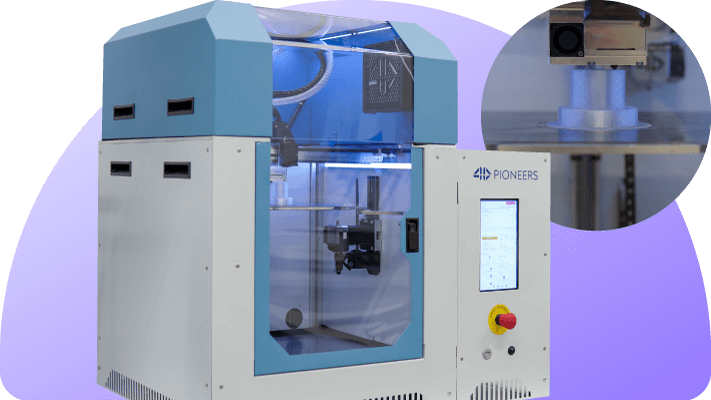
3D Printing
- Customizing and optimizing the parametric manufacturing set.
- Studies aimed at the eco-design of parts/systems.
- Production of aerospace parts (proof of concept).
- Design and manufacturing of parts with structured materials.
- Manufacturing of parts from functionalized filaments or granules.
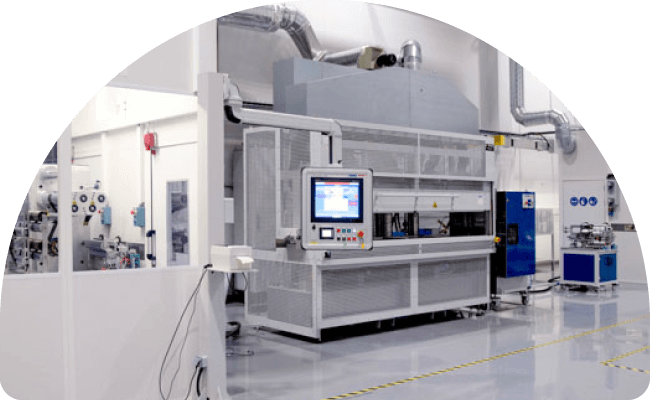
Thermoplastic, Thermosetting, and Vitrimer Impregnation
- Development of prepregs from any compatible fiber-matrix pair.
- Optimization of process parameters to improve productivity, material health quality, or prepreg performance.
- Study and production of prepregs with optimized architecture to improve processability during draping (manual, AFP) and consolidation phases (autoclave or out-of-autoclave).
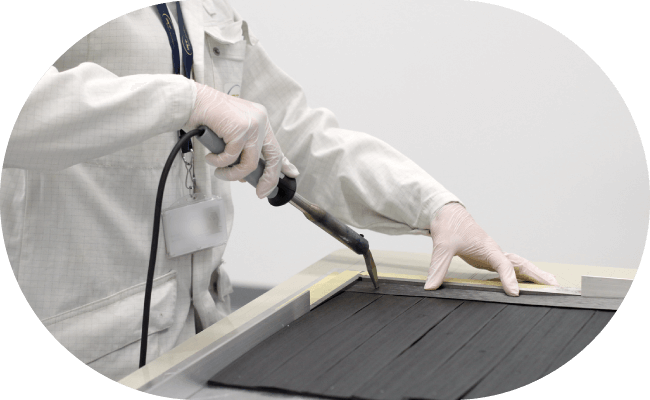
Design and manufacturing of composite parts
- Mold design
- Manual draping
- Draping and function addition using hybrid AFP-3D printing machine
- Evaluation of in-situ AFP consolidation processes
- Autoclave and out-of-autoclave consolidation
- Manufacturing through injection and infusion processes
- Assembly of parts via induction welding
Characterization of Polymers and Composite Parts
Physico-Chemical Analysis:
- Characterization of the rheological behavior and thermal degradation of polymers (determination of a phase transformation diagram).
Mechanical testing:
- Development of non-standard thermomechanical or aging tests combining mechanics, high temperature, and the representativeness of the aircraft environment.
- Modeling and providing material mechanical behavior laws under these specific conditions.
Dynamic impact testing:
- Modeling and conducting impact tests across a wide range of speeds, projectile masses, and energies (bird strike, ballistic shooting, etc.).
X-ray tomography:
- 3D inspection and analysis of the health/materials of parts.
- Quality control of assemblies, porosity evaluation, crack detection, CAD/Final part comparisons.
- In-operando thermomechanical tests on specimens: tension and compression from ambient temperature to 900°C.
Ultrasonic testing: A-Scan and C-Scan
Non-standard characterization to assess the performance of functionalization:
- Measurement of thermal diffusivity/conductivity
- Acoustic absorption measurement using Kundt's tube
- Fire resistance testing
- Fiber-matrix interface characterization (pull-out)
Materials analysis:
- Sample preparation
- Material health analysis (fiber content, porosity, delamination, etc.)
- Profilometry and 3D surface analysis


